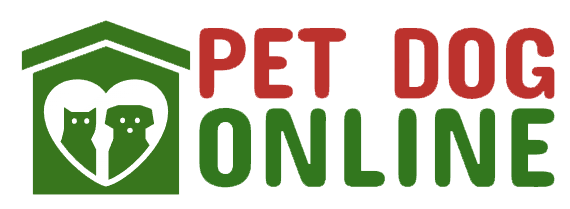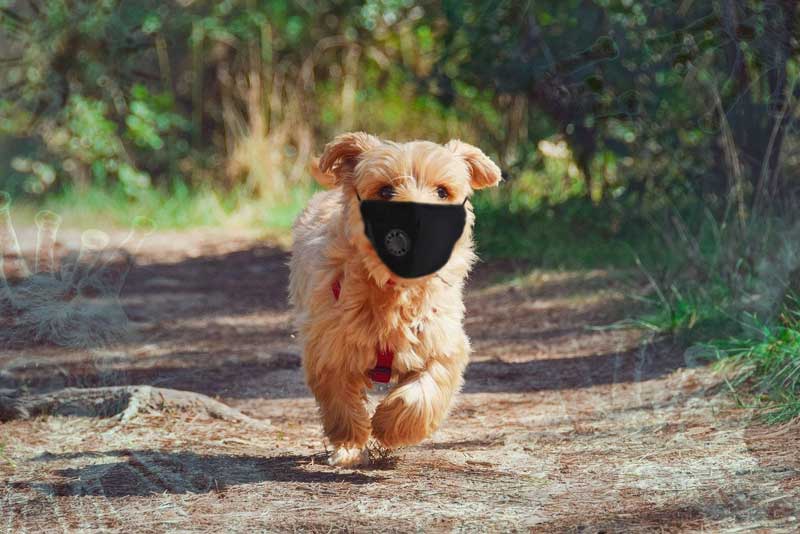
Obesity in Dogs
Obesity in Dogs: Symptoms, Health Issues, Recovery and Treatment, Right Obesity Food
Obesity, whether in a human or in an animal, is an uncomfortable condition. Just that the risks involved with those extra pounds are much higher among pets. Here is a complete guide to obesity in dogs. Scroll down to read about the symptoms and health issues with obesity and the right obesity food and ways for the recovery and treatment of dog obesity.
Symptoms of obesity in dogs :
There are a few common easily noticeable symptoms of dog obesity. As a dog owner, it is crucial that you know and understands these dog obesity symptoms.
The pet being overly hungry :
- Noticeable fat belly- when looked from above, you’ll find the middle portion of the dog particularly fat and there will be almost no waistline
- Ribcage may not be palpable
- Difficulty in exercising or the pet being lethargic
- The weight of the dog being much above the expected average weight for the breed
- Noticing and keeping track of the size and weight of your pet is one obvious way of knowing whether or not your dog is obese. If your dog’s body-weight is 10-15 per cent (or over) more than the average body weight among the breed, you can be certain about the obesity issue.
For your reference, the average range of dog weight chart for different breeds is specified below.
Dog weight chart :
Causes of obesity in dogs :
Obesity in dogs may result from an array of reasons; many obvious, while some unexpected. Here are some of the main factors that contribute to dog obesity.
Overeating or unscheduled eating :
One of the most common reasons for obesity among pet dogs is owners going careless about the diet of the dog or its food-schedule. In many a case, this lack of attention on the diet schedule or feeding limits due to the ignorance (covered by love for pets may be) result in overeating, thus paving way for the pet going obese. It is a good idea to consult your vet for getting a diet chart suitable for your dog, based on its breed and its health conditions. You can even take a look at our guide to dog feeding to understand the diet and feeding limits better.

Lack of proper exercising :
Another of the top causes of dog obesity and overweighing is the lack of appropriate and adequate exercising.
Neutering and medications :
Surgical or medical neutering might have some side effects on some dogs, one of which might be obesity. Similar is the case with dogs on various medications or if it has undergone some surgery.
Wrong food products :
Many pet parents ignore the label or forget checking out the ingredients of the food products they choose for their pet. Feeding dogs with high-calorie food or letting them have treats too frequently etc. is yet another common cause of obesity in dogs.
Another cause related to food-habits is feeding human foods- mostly table scraps orsome high-fathuman foods and sweets to dogs. Dogs tend to hover around humans as they eat and out of love and affection, people feed them a part of their food. While sometimes it might be okay, such habits usually end dogs up is obese condition. Moreover, many of the human food, including chocolates can be really bad (even poisonous) for their health.
Dog Breeds prone to obesity issues :
As much as you’d hate to know any disease vulnerabilities in your pet, it might actually be helpful to know your dog may be genetically more prone to being obese. So here are the top breeds that are most reported of going obese.

- Basset Hound
Regardless of their nature and appearance, these guys need some exercise every day to keep their weight from jumping up a few many pounds.
- Beagle
Beagles have a tendency to eat until the food before them disappears, that too at the blink of an eye. No wonder they go overweight if their diet isn’t rigid.
- Cocker spaniel
Being field breeds, they’ve got some good lot of energy to burn. So they’ll sure gain some pounds if a regular exercise routine is not followed.
- Dachshund
People often overlook regular and right exercising for this breed since they appear little. But given their short legs, obesity can be a lot bigger trouble for them.
- Bulldog
Due to their natural appearance, most bulldog owners mistake their ‘chubbiness’ to be normal, thus ignoring the growing weight scale.
- Golden Retriever
Goldies are yet another set of furry-guys who come with obesity packed genetically, if not given strict attention.
- Labrador Retriever
Labs are highly active breed and certainly eat everything they can. Thus, they should be given plenty of opportunity to burn their energy- and to maintain their weight.
- Newfoundland
They are naturally lazy. No explanation needed on why these giants go fat quite easily!
- Pug
Just like bulldogs, people often believe pugs are supposed to be a little overweight. But health-stakes are way too high for pugs, given the breathing and cooling difficulties they naturally experience.
- Rottweiler
Even though they are sometimes lazy, as a hunting breed, they’ve got a lot of energy to burn. In addition, they’re naturally designed with a huge appetite.
Obesity in dogs health risks :
Dogs suffering from obesity runs the risk of several health issues, not just minor, but they may evenrun into some serious diseases. Most common of the problems faced by the dogs suffering from obesity include diverse joint and ligament problems or damages including arthritis, slipped discs as well. Joint issues can be expected if dogs aren’t exercises alongside being obese. Obesity due to over-eating often leads diabetes. Inany obese dog breathing problems may be found to some degree too. This is generally due to the poor functioning of lungs in obese dogs.

A major concern is the tendency among obese dogs is of developing heart and high blood pressure problems. Many a case has been reported of these factors adding up to cognitive heart failures. Some other major health risks associated with obesity in dogs are lowered functioning of the liver, poor immunity, skin or coat conditions, digestive problems and even reproductive issues. Some studies even associate few types of cancers with obesity.
Treatment and Prevention of obesity in dogs :
Prevention of obesity in dogs can be easy if given attention early. In most cases, some basic health routines and basic care can help to prevent obesity in dogs.
Exercising :
One obvious way out of obesity problems- in human and pets alike- is regular, planned exercising. It is very important that you exercise your dog regularly to keep them in shape. Moreover, in the early stages of obesity, regular and scheduled exercising, walking can treat and wipe out the extra fat deposits. Swimming if possible is recommended (except for the non-swimmer breeds). Note here though, that over-exercising is anyway not a good idea. It may give way to more problems or accidents. Also,jumping and running should be avoided for obese dogs as it generally puts strain on their joints, worsening the health.

Scheduled diet :
The best way or the prevention of obesity in dogs is fixing the right diet schedule from the beginning and not letting the love for your pets force you into overfeeding them. For the treatment of dogs suffering from obesity, the obesity diet needs to be scheduled.You Vet would probably suggest your dry dog food as it has it has the right caloric nutrition planned for the breed according to its age.
Avoid house food while you can, especially if not recommended by your vet. When pet parents feed home food,they do not properly measure the right amount of nutrients required for them and miss out on the overall nutrition that should be needed for their well-being. Sometime, it may result in overfeeding.
Choosing the right food :
While on an obesity diet, the food products with least fat and calorie contents are to be preferred. On the other hand, fiber content must be on the higher side. Your vet would be able to suggest the right food for an obese dog. Also, you can check out the top obesity foods of our choice below.
Slow eating :
Some dogs eat way too fast. However, serving small portions slowly might keep pet parents busy. An alternative here is getting such bowls that are designed such as to require more time for the pet to eat.
Obese Dog diet ( Top obesity dog food product reviews ) :
While your dog is suffering from obesity, the food habits of course need to be replaced with healthier alternatives. Replacing your normal dog food with these dog obesity food products can prove to be quite helpful in their weight management. Here are the top weight loss dog foods we recommend.

- Royal Canin Veterinary Diet Satiety Support Dry Dog Food
Specifically formulated for taking care of the health requirements while lowering the fat proportion in the body, Royal Canin Diet Satiety Support is certainly is a go-to solution for every pet parent who is worrying about their paw-ppy’s loading weight. This would need a prescription though, that is of your vet since it will be supplementing the dietary plans. The product can work pretty great along with other obesity based behavioral changes that you are making. Being high in protein and fiber and quite low on calories or fats, it promotes weight loss without any negative impacts on joints or bones.

- FarminaN&D Vet Life Obesity Canine Formula
It is yet another reliable obese dog food. The food product lowers the overall calorie intake, and with a high fibre content, it would lower and maintain appetite. It is even helpful for dogs with diabetes, as the food product is manufactured with much lower levels of sugar and starch content. Overall, it can be pretty suitable for obesity dog diet as well as for treating diabetes mellitus. On the other hand, so as to maintain the muscle mass, the product comes with high protein and carnitine content.The product is available in different pack sizes, starting from 2 Kg, going up to 12 Kg.

- Drools vets pro
Most pet parents are happy with the Drools Vet Pro obesity food for dogs. It is easy-going and convenient. The product comes with high fiber content that satiates the appetite. It is one good alternative to ensure the low level fat and calorie intake of your pet.

In this context, note that, the weight loss exercising and diets may differ from breed to breed. While some dog breeds may require intensive exercising, some breeds, like Pugs, may not handle a rigorous workout routine. While you can making changes in the food and routine of your pet, make sure you don’t do it all over-night. The change must be gradual. If not for the early stages, it is a good idea to consult a vet. You can even get in touch with our support team!





